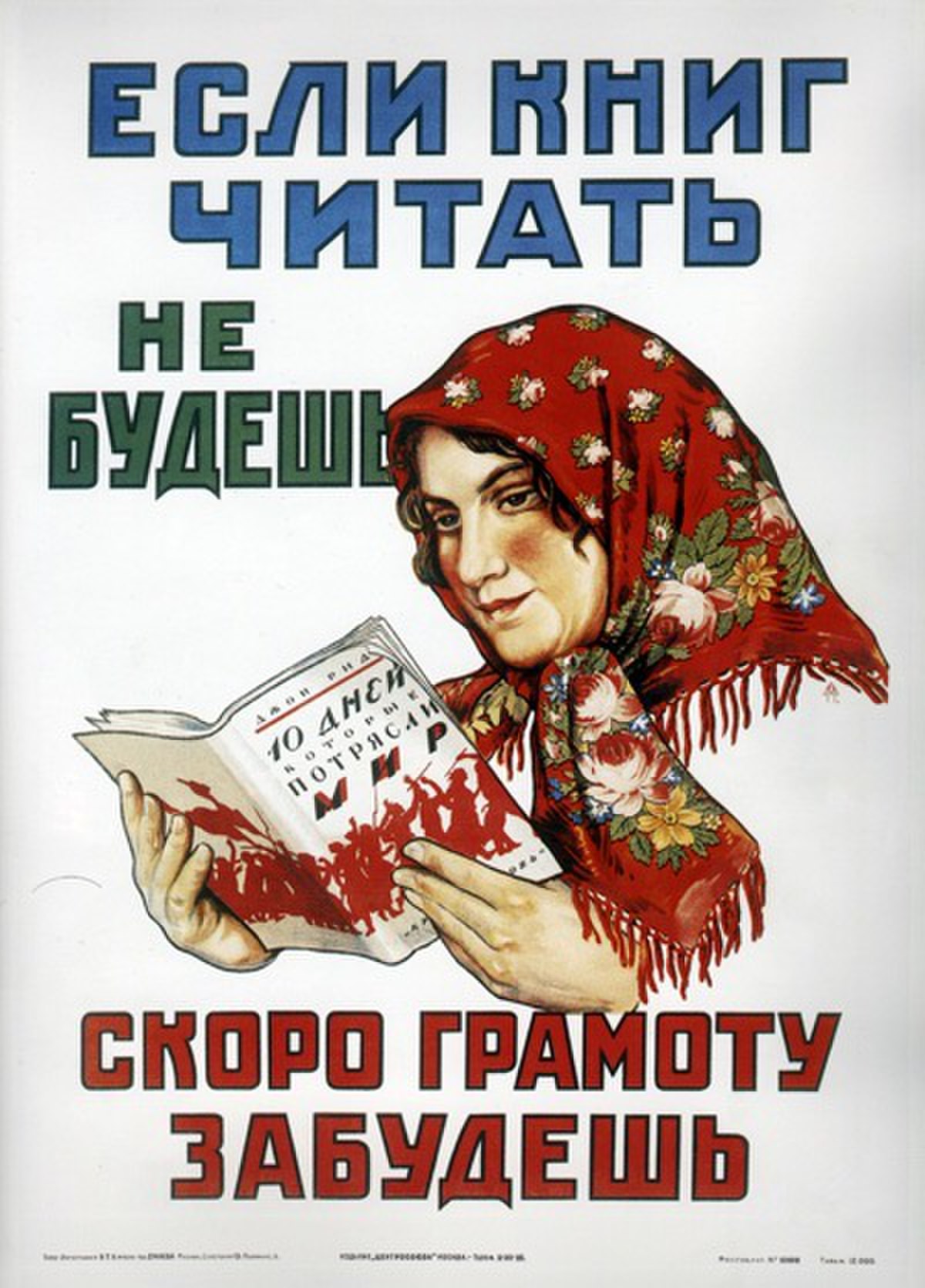
Cultural Revolution in the Soviet Union
RussiaThe cultural revolution was a set of activities carried out in Soviet Russia and the Soviet Union, aimed at a radical restructuring of the cultural and ideological life of society. The goal was to form a new type of culture as part of the building of a socialist society, including an increase in the proportion of people from proletarian classes in the social composition of the intelligentsia. The term "cultural revolution" in Russia appeared in the "Anarchism Manifesto" of the Gordin brothers in May 1917, and was introduced into the Soviet political language by Vladimir Lenin in 1923 in the paper "On Cooperation"e cultural revolution is... a whole revolution, a whole strip of the cultural development of the whole mass of the people".
The cultural revolution in the Soviet Union as a focused program for the transformation of national culture in practice often stalled and was massively implemented only during the first five-year plans. As a result, in modern historiography there is a traditional, but, in the opinion of a number of historians, the not completely correct, and therefore often contested, correlation of the cultural revolution in the Soviet Union only with the 1928–1931 period. The cultural revolution in the 1930s was understood as part of a major transformation of society and the national economy, along with industrialization and collectivization. Also, in the course of the cultural revolution, the organization of scientific activity in the Soviet Union underwent considerable restructuring and reorganization.
The Cultural Revolution, which touched Soviet social life in three main ways:
First, the Cultural Revolution created a need for scientists to demonstrate their support to the regime. During the NEP years, the Bolsheviks tolerated “bourgeois specialists” such as medical doctors and engineers, who tended to come from wealthier backgrounds from pre-revolutionary years, because they needed these specialists for their skilled labour. However, a new generation of Soviet children educated in Soviet ideology would soon be ready to replace the bourgeois specialists. These technically educated students would later be called “Red specialists.” The regime saw these students as more loyal to Communism and as a result more desirable than the old bourgeois remnants. Because the state would no longer need to rely so heavily on the bourgeois specialists, after 1929, the regime increasingly demanded that scientists, engineers, and other specialists prove their loyalty to Bolshevik and Marxist ideology. If these specialists did not conform to the new demands for loyalty, they could be accused of counterrevolutionary wrecking and face arrest and exile, as with the engineers accused in the Shakhty Trial.
The Cultural Revolution also affected religious life. The Soviet regime regarded religion as a form of “false consciousness” and wanted to reduce the masses' dependence on religion. The Soviet regime transformed previously religious holidays such as Christmas into their own, Soviet-style holidays.
Finally, the cultural revolution changed the educational system. The state needed more engineers, especially “Red” engineers to replace the bourgeois ones. As a result, the Bolsheviks made higher education free – many members of the working class would not otherwise be able to afford such education. The educational institutions also admitted individuals who were not sufficiently prepared for higher education. Many had not finished their secondary education, either because they could not afford it or because they did not need one to get an unskilled job. Furthermore, the institutions tried to train engineers in a shorter amount of time. These factors combined led to the training of more scientists and engineers, but of lower quality.
